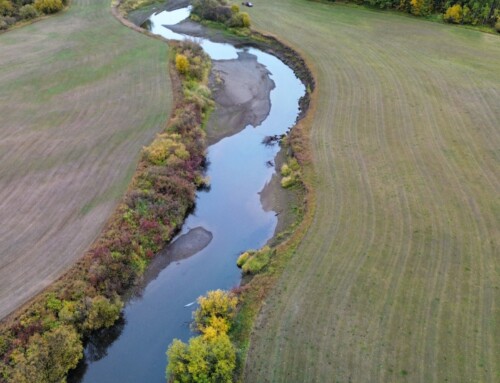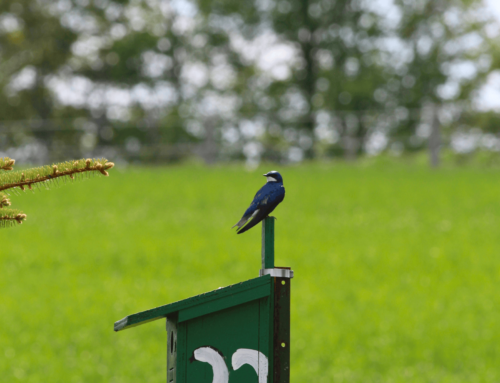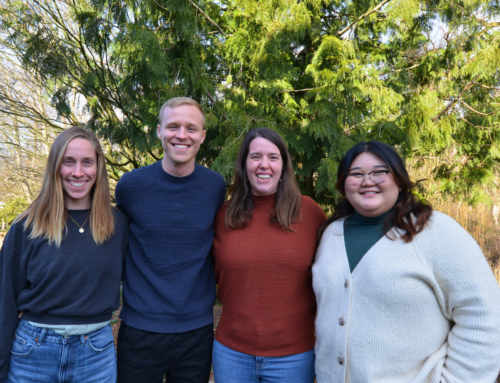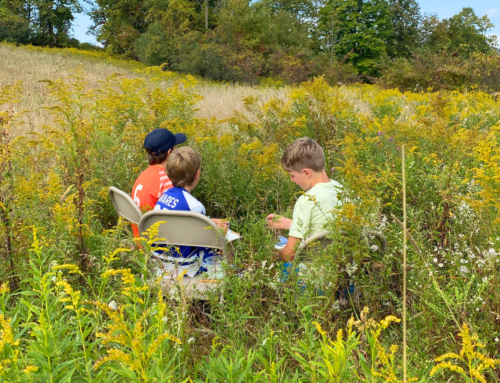A single site for Oregon Forestsnail has been known from the Little Campbell River watershed since 2006. Empty Oregon Forestsnail shells were first found by members of the A Rocha conservation team during a Christmas bird count, but in follow-up surveys during the typical activity season for the snails in later years, no live individuals were found. As a result, there was concern that this species may have been lost from the watershed in recent years. Because of this, the 2013 snail surveys didn’t start with high hopes.The Oregon Forestsnail is one of just a few large forest-dwelling land snail species found in the forests of Washington, Oregon, and southwestern British Columbia. In Canada, its distribution is limited to small, isolated areas in the Lower Fraser Valley where it inhabits mature broadleaf and mixed forests with rich moist soils and thick leaf litter. It is commonly associated with patches of Stinging Nettle. Because of its limited range, specific habitat requirements, and the wide variety of threats to its ongoing survival in the area, the Oregon Forestsnail is red-listed in BC and has been designated as Endangered under the Canadian Species at Risk Act since 2002.
However, this summer, Christina Lee and I (both interns at A Rocha Brooksdale) decided to include the site of this original occurrence in a broader survey for Oregon Forestsnails in the watershed to see what we could find. Walking along a side path, we noted several different kinds of snails: Oregon Lancetooth, the introduced Grovesnail, Northwest Hesperian, Grovesnail, Grovesnail, Grovesnail,… and then one that we hadn’t seen before. This snail had a pale brown body and a brown shell which partly wore away to a chalky-white in the centre of the whorl. “I’m pretty sure I know what this is,” I thought to myself as I showed it to Christina. We hadn’t seen a live Oregon Forestsnail before, only a couple of long-empty shells, some photos and written descriptions. It wasn’t until we saw a second, older snail which had the characteristic flared lip on the shell’s opening with even more wearing away of the shell’s top layer that we knew for certain that we had found the Oregon Forestsnail.
Soon after, we were finding more and more Oregon Forestsnails, in a much higher density than any other group of snails we’d seen before. We found it very difficult to contain our excitement! At that site we found a total of 21 Oregon Forestsnails at the edge of a Red Alder stand amongst a thick Stinging Nettle patch. The nettles were so thick and there were so many snails that we could see more from the path but couldn’t get to them in case we trampled them or their habitat.
We feel so privileged to have confirmed that live Oregon Forestsnails do inhabit the Little Campbell River watershed and that this previously documented site is still supporting this species. As is so often the case with endangered species, they have unique and specific habitat requirements, and it was clear the quality of habitat we came across was very suitable for Oregon Forestsnails. The area they were in was fairly small and isolated from any similar habitat, so even a small threat to this habitat is likely to badly affect them. A Rocha’s hope is to work with the local landowner of the site to protect the snail’s habitat and to continue to monitor the population to ensure that Oregon Forestsnail persists in the watershed for a long time to come.
– Emily Upcott,
Brooksdale Conservation Science Intern










